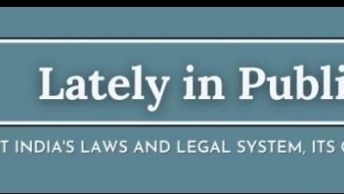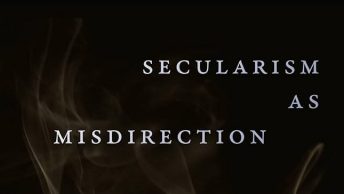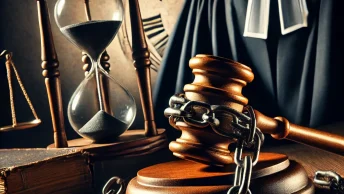Dear Colleagues,
Many thanks to Vikram for allowing me to plug a piece that I have forthcoming in the Journal of Appellate Process and Pratice (forthcoming spring 2008). The paper is posted on, and can be downloaded off of, SSRN
(see link: http://papers.ssrn.com/sol3/papers.cfm?abstract_id=1003811)
The title and abstract are below. Comments are welcome and appreciated. Best, Jayanth Krishnan
Title: Scholarly Discourse, Public Perceptions, and the Cementing of Norms: The Case of the Indian Supreme Court and a Plea for Research.
Abstract:
For economic and nuclear reasons, India has received considerable attention over the last decade from observers in the United States. But attuned Americans are well-aware of India’s rich culture and status as a shining constitutional democracy for most of its post-1947 independent history. For all that India has accomplished, however, its public has long viewed its government officials with great disdain. At the same time, a fascinating norm exists in this society which holds one institution in exceedingly high regard – the Indian Supreme Court.
In this article, I seek to examine what accounts for this counter-intuitive norm. As opposed to other state institutions, the Indian Supreme Court is perceived as uncorrupted and as an aggressive protector of individual rights. Yet as I argue, these affirmative sentiments towards the Court mainly appear within scholarly discourse. The Court’s various landmark judgments over the years certainly have enabled participants in this discourse to promote its reputation. But because actual evidence is lacking, we simply do not know if this scholarly norm reflects the perceptions of the mass public. Indeed the reality is that most Indians never have any contact with the Court; interaction with the legal process is usually done at the lower court level which can be delay-ridden and expensive. Moreover, because there are legal and social sanctions that can result from criticizing the Court, it may well be that many within the general public individually reject the scholarly norm but are afraid to speak-out or believe that they are alone in their disagreement. That this social-psychological phenomenon of pluralistic ignorance, which I discuss in detail, may be occurring has important implications, including forcing us to reexamine the extent to which the Court is able – in the eyes of the Indian public – to protect and advance a substantive rights agenda.






Well-written piece that succinctly summarizes the major events and their impact on the image of the Supreme Court. Below are a few thoughts that occurred to me as I read it.
I accept your argument of legal and political sanction but am curious about the idea of social sanction that you mention. Your hypothesis of pluralistic ignorance also appears to be built on this notion. Yet, correct me if I am wrong, I have never read or heard of any instance where an individual suffered any kind of social ostracism or even discrimination for publicly voicing an adverse opinion of the higher judiciary.
You have not mentioned anything about the class bias of elite scholarship which might be able to explain some of this popularity. Most professionals in every field, including legal scholars as well as judges being drawn largely from the middle classes, it ought not to be altogether surprising if they have concurrent or overlapping views about the nature of public interest, a phenomenon particularly apparent of late. Even political opinions regarding the judiciary and its actions, which to the extent that it might reflect popular beliefs, seem to be split along class lines. In recent times, parties like the BJP with a largely urban base have been most accepting of judicial wisdom while those like the Communists with predominantly rural support have been either wary or openly critical.
Also, the role of the press, to the extent that it reflects popular demand and tailors to public sentiment, is important. Most if not every major judgment of the Court has been criticized from some quarter as you have pointed out. However, whether such critical opinions receive coverage in the press holds the key and the ones most critical of the judiciary being projected least prominently cannot, I think, be entirely accounted for by the threat of contempt citation alone – the press of late has been highlighting instances of corruption in the judiciary with the same fervor with which it covers political scandals.
You are right to advocate greater research into public opinion regarding the Court. It would also help to know the basis for opinions that people hold – half-baked and utterly wrong-headed notions popularized by the media have, in recent times, stifled governmental effort – so that one would know how much importance to give to such views and what remedial measures for legal education it would be necessary to undertake.
Dear Dilip,
Great observations and ones that I will attend to as I proceed along the re-writes of the drafts before it is published.
It seems to me, and I shall elaborate on this more thanks to your comment, that what happened to Dembowski (i.e., his being ostracized from the Indian & German academies and from being able to conduct further socio-legal research in India) is the exemplar of the social and legal sanctions that can occur. I also think your point re the press is key too — yes, I do see a definite class bias, as you mention, and I do think any rigorous research on the public’s opinion of the Court needs to take this into account.
Thanks again for your thoughtful comments
jk